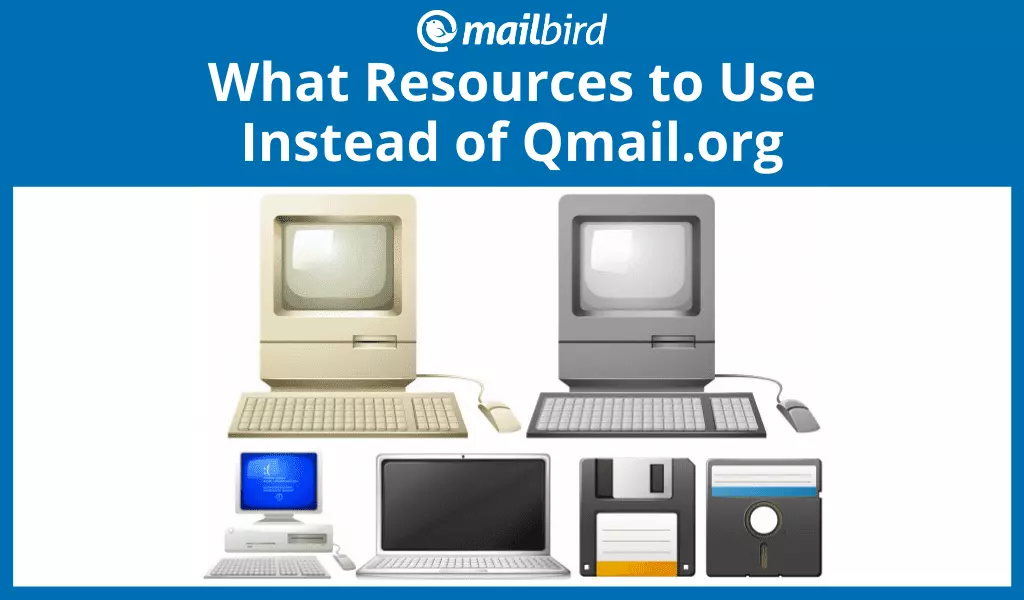What Resources Are Available for Qmail Now That .Org Is Gone?

One of the most popular reference sites for Qmail email users was Qmail.org. However, try to access the site today, and you'll discover that it is gone.
For many people, sending an email involves a few simple steps. In most cases, all you need is to have your email account, the email address of the person to whom you're sending the message, a subject, and the message itself. As long as you know how to click the send button, your email is as good as sent. However, in the background, the action is a little more complicated.
This is where a Mail Transfer Agent (MTA) plays an integral part in ensuring that a message successfully moves from a Qmail email sender to the receiver. Qmail is one of the popular MTAs that have dominated the internet over the last two or so decades.
We took some time to research what happened to the reference site. Then we identified resources that people who relied on it can resort to now that it is no longer available.
What Is Qmail?
Dale Sill, the writer of the Qmail Handbook, describes it as "an Internet MTA for Unix and Unix-like operating systems."
Sill goes on to explain that the function of an MTA is twofold. The first is to accept new messages coming from a user's computer and deliver them to the network of the recipient. The second is to accept emails coming from other systems, which are usually directed at local users. Many people who send Qmail emails would neither know nor care what MTAs do because they do not directly interact with these systems.
The History of Qmail
Daniel J. Bernstein, the developer of the Qmail software package, works as a professor at the Department of Mathematics, Statistics and Computer Science at the University of Illinois at Chicago. He began coding the app at the end of 1995. He reports that he got serious when he became "sick of the security holes in Eric Allman's Sendmail software." At that time, Sendmail was the leading MTA on the internet.
The Qmail inventor was not the only one who noticed the challenges Sendmail faced in the 1990s. Sill did also, noting that even though "Sendmail developers have worked hard over the years to enhance its security and performance… there's only so much that can be done without a fundamental redesign."
According to Sill, the main challenges faced by Sendmail were linked to the fact that it was developed before the explosion of the internet in the early years of the 1990s. It had been created for a time when the internet was small and the people online knew each other. He notes that at that point "security was not a major concern" because "there were few potential 'bad guys' from which to be protected."
As the internet expanded and many businesses started to conduct their affairs online, the need for an MTA that could respond to the escalating security challenges became increasingly obvious. This was the background against which the Qmail inventor developed and implemented an MTA that could face the threats presented by the modern internet.

Bernstein v. Department of Justice
Bernstein was famous for more than just the Qmail email. In 1999, he took the government of the United States to court after the Export Administration Regulations (EAR) attempted to prevent him from publishing the source code freely. The EAR is the agency regulating whether something can be exported from the United States.
In court, Bernstein argued that the actions of the EAR were an infringement on his First Amendment rights. In its verdict, the court agreed with Bernstein. It stated that even though not all software is an expression, programming can be taken as speech, which is protected by the First Amendment.
The Guarantee
Bernstein was so confident in the app's security that in 1997 he took the bold step of publicly offering a reward of $500 to the first individual who could publish a verifiable security hole in the latest version of Qmail. When no one claimed the $500, he raised his offer to $1000. There is currently no information on anyone claiming this prize.
Distinguishing Between Qmail and Qmail.org
The software is still widely available (and widely used). The Qmail homepage was a website designed as a reference site for Qmail users, and it provided several resources, including a list of "mirrors" of the Qmail homepage. As of August 2019, the site was down, and there is very little information about what happened to it.
Qmail.org appeared on the internet for the first time around December 1996. At this time, visitors to the site could get information related to other software that works with Qmail. Users could also access some general tips for solving problems associated with the software.
The Man Behind Qmail.org
Russ Nelson created the reference site. Even though Nelson gained his fame as an American computer programmer and briefly served as the president of the Open Source Initiative, he attracted controversy in 2005 when he posted an article titled "Blacks Are Lazy" on his blog.
Reports indicate that the fallout from Nelson's controversial article forced him to step down from his position at the Open Source Initiative. However, he has challenged the accusation of racism and said, "I think that my chief mistake was to say, "Blacks are lazy," rather than asking, "Are blacks lazy?" He apologized to anyone who thought the post was racist.
Qmail.org Mirrors
The Qmail reference website was mirrored in several places. Mirroring refers to the creation of an identical website or web page under a different URL. Usually, mirror sites are located in different continents to relieve pressure on the original site.
If you're interested in a list of mirrors in different continents, you can find them here.
Alternatives to Qmail.org
Now that website is no longer available, what resources could those who relied on the site to solve Qmail problems resort to? We identified a few.
Everything About Qmail
It might be a long time since the site LifeWithQmail.org was last updated, but it still provides excellent resources for anyone looking for comprehensive information about the MTA.
From LifeWithQmail.org, you can download the Life with Qmail PDF handbook. The handbook introduces readers to the software, its history, features, and reasons they should use the MTA, among other topics. It provides details on installation, configuration, and usage.
Qmail Tips
In its early days, Qmail.org served up articles written by information technology experts like John Mitchell and Tim Godwin, offering users tips on how to solve Qmail problems. It also provided information about where users could find commercial support for the app. One site that still provides similar services is Qmailrocks.org. It provides a platform where you can access a how-to guide on installing Qmail email and other tips.
User Forums
EmailQuestions.com provides a forum where Qmail users can ask any question about the MTA. From this site, you will find discussions on topics like Qmail with smarthost, Setup Qmail as a stand-alone mail server, and Qmail: filtering OUTbound mail.
News
Qmail.omnis.ch delivers news on all things to do with Qmail from as early as 1999. This is an excellent resource for someone who wants to follow the history of the MTA. You can read all the stories here.
Wrap Up
Qmail is an MTA that has been incredibly popular for about the past two decades. And now it is gone.
We cannot conclusively say what happened to Qmail.org. However, we can confidently say that Qmail users still have several resources they can turn to for tips, news, selecting mirrors, and asking questions.